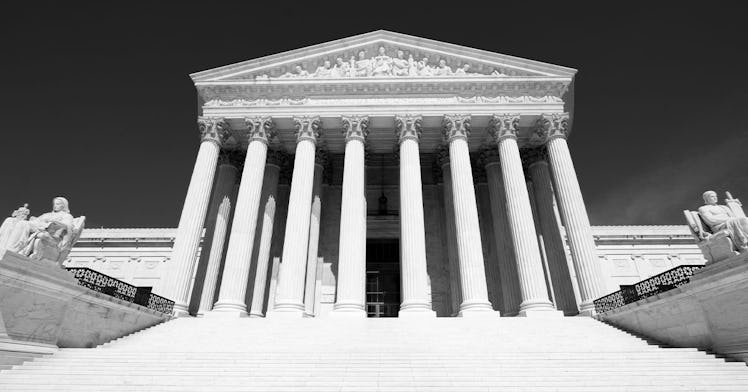Supreme Court Rules to Allow Near-Total Texas Abortion Ban to Stand
'Roe v. Wade' is functionally no longer the law of the land. Here's what happens next.

The Supreme Court has finally weighed in on SB 8, the Texas law that makes performing (or abetting) an abortion more than six weeks into a pregnancy illegal. The law is enforceable not by public employees or agencies, but by private citizens who can file lawsuits in state civil courts against anyone who “abetted” such an abortion. By shifting enforcement responsibility to the public at large, the authors of the legislation were attempting to evade federal courts. For the moment, it appears they were successful.
Here’s what you need to know about the decision and the future of abortion care in the United States.
What does the decision say?
In an unsigned decision issued at 11:59 last night, the Court’s five most conservative members wrote that the pro-choice groups “now before us have raised serious questions regarding the constitutionality of the Texas law at issue.”
“But their application also presents complex and novel antecedent procedural questions on which they have not carried their burden,” the single long paragraph that made up the opinion continued.
If these all sound like technicalities, that’s because they are. The majority did make it clear that they “do not purport to resolve definitively any jurisdictional or substantive claim in the applicants’ lawsuit,” leaving the door open to future challenges to the Texas law.
What did the other justices say?
All four dissenting justices filed their own opinions. They variously urged caution in dealing with the “unprecedented” statutory scheme (Roberts), criticized the overuse of the shadow docket (Kagan), and called the law blatantly unconstitutional (Breyer).
But the most memorable opinion came from Justice Sonia Sotomayor.
“The Court’s order is stunning,” it began. “Presented with an application to enjoin a flagrantly unconstitutional law engineered to prohibit women from exercising their constitutional rights and evade judicial scrutiny, a majority of Justices have opted to bury their heads in the sand.” Sotomayor went on to accuse her colleagues of rewarding “tactics designed to avoid judicial review.”
What is the current situation in Texas?
The Supreme Court’s decision will force the vast majority of pregnant Texans to carry their pregnancies to term unless they have the means to travel out of state. It fails to cite Roe v. Wade to affirm those rights, meaning that Roe is not the law of the land for the first time in half a century.
The law increases the average distance those in Texas seeking abortion care have to drive from 12 to 248 miles, according to a Guttmacher Institute study. The state’s abortion clinics treated a ton of patients the day before the law went into effect, but now they are much less busy, as only those who are less than six weeks pregnant — when the vast majority of women don’t even know they’re pregnant — can get an abortion in Texas. (Some 85 percent of abortions in Texas are performed after six weeks of pregnancy.)
If the goal was to make it harder for pregnant people to obtain abortions, then the law has been a success so far.
What are the Democrats going to do?
National Democratic leaders had harsh things to say about the Texas bill and the Supreme Court majority’s decision.
The crucial question going forward is what Democrats will do to turn their words into actions that will preserve and protect the rights of pregnant people to access reproductive healthcare easily and without interference around the country.
Measures they could consider are eliminating the filibuster — the only way the Women’s Health Protection Act Pelosi mentioned can become law during this Congress — and expanding the Supreme Court to counterbalance its current conservative majority. Both would represent violations of the norms that institutionalists in Congress often cite when justifying their inability to pass laws.
But without dramatic action on behalf of vulnerable pregnant people, the Texas state government’s own dramatic action will doom the right to abortion care in much of the United States.
This article was originally published on